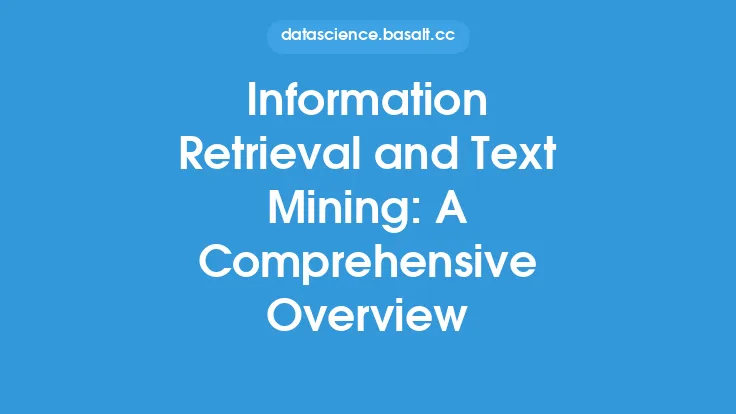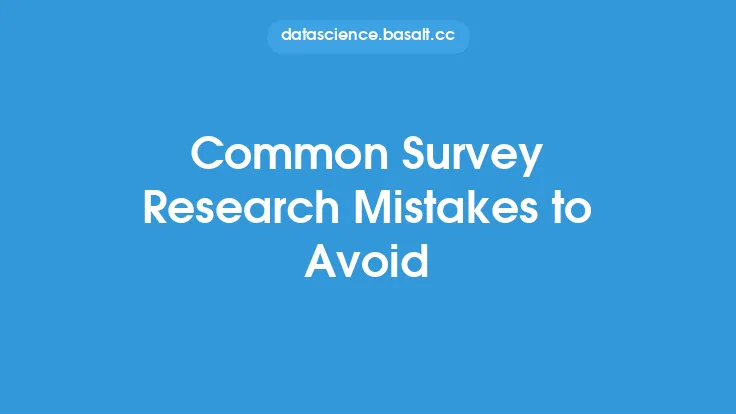Survey research is a crucial tool for gathering information and understanding the attitudes, behaviors, and opinions of a population. It involves collecting data through a series of questions, which can be administered in various formats, including online, phone, mail, or in-person. The goal of survey research is to provide insights that can inform decision-making, policy development, and strategic planning. In this article, we will delve into the various survey research methodologies, their strengths and limitations, and the key considerations for selecting the most appropriate approach.
Types of Survey Research Methodologies
There are several types of survey research methodologies, each with its own unique characteristics and applications. The most common types include cross-sectional, longitudinal, and experimental designs. Cross-sectional designs involve collecting data from a sample of participants at a single point in time, providing a snapshot of the population's attitudes and behaviors. Longitudinal designs, on the other hand, involve collecting data from the same sample of participants over an extended period, allowing researchers to track changes and trends over time. Experimental designs involve manipulating one or more variables and measuring their effect on the outcome, providing a high level of control and internal validity.
Survey Administration Modes
Survey administration modes refer to the way in which the survey is delivered to the participants. The most common modes include online, phone, mail, and in-person. Online surveys are becoming increasingly popular due to their convenience, cost-effectiveness, and ability to reach a large sample size. Phone surveys, on the other hand, are useful for collecting data from hard-to-reach populations or for conducting interviews that require a high level of interaction. Mail surveys are often used for collecting data from a geographically dispersed sample, while in-person surveys are typically used for collecting data from a small, localized sample.
Sampling Techniques
Sampling techniques are used to select a representative sample of participants from the target population. The most common sampling techniques include probability sampling, non-probability sampling, and quota sampling. Probability sampling involves selecting participants randomly, using techniques such as simple random sampling, stratified sampling, or cluster sampling. Non-probability sampling involves selecting participants based on non-random criteria, such as convenience sampling or snowball sampling. Quota sampling involves selecting participants based on pre-determined characteristics, such as age, gender, or income level.
Questionnaire Design
The questionnaire is a critical component of survey research, as it determines the type and quality of data collected. A well-designed questionnaire should be clear, concise, and easy to understand, with questions that are relevant and unambiguous. The questionnaire should also be pilot-tested to ensure that it is effective in collecting the desired data. There are several types of questions that can be used in a survey, including open-ended, closed-ended, and scale questions. Open-ended questions allow participants to provide detailed, qualitative responses, while closed-ended questions provide a limited range of response options. Scale questions, on the other hand, ask participants to rate their attitudes or behaviors on a numerical scale.
Data Collection and Management
Data collection and management are critical components of survey research, as they determine the quality and accuracy of the data. Data can be collected using a variety of methods, including online survey software, paper questionnaires, or interview protocols. Once the data is collected, it must be cleaned, coded, and entered into a database for analysis. Data management involves ensuring that the data is accurate, complete, and secure, with procedures in place for handling missing data, outliers, and other data quality issues.
Survey Research Applications
Survey research has a wide range of applications, including market research, social science research, and policy evaluation. Market research uses survey data to understand consumer attitudes and behaviors, informing product development, marketing strategies, and business decisions. Social science research uses survey data to understand social phenomena, such as poverty, education, and health outcomes. Policy evaluation uses survey data to assess the effectiveness of policies and programs, informing decision-making and resource allocation.
Challenges and Limitations
Survey research is not without its challenges and limitations. One of the main challenges is ensuring that the sample is representative of the target population, with adequate response rates and minimal non-response bias. Another challenge is ensuring that the questionnaire is effective in collecting the desired data, with clear and concise questions that are free from bias. Additionally, survey research is subject to various sources of error, including measurement error, sampling error, and non-response error. Despite these challenges, survey research remains a powerful tool for gathering information and understanding the attitudes, behaviors, and opinions of a population.
Future Directions
The field of survey research is constantly evolving, with new technologies and methodologies emerging all the time. One of the most significant trends is the increasing use of online and mobile surveys, which offer a convenient and cost-effective way to collect data. Another trend is the use of big data and analytics, which can provide insights into large datasets and inform decision-making. Additionally, there is a growing recognition of the importance of survey research in informing policy and decision-making, with a greater emphasis on using data to drive evidence-based practice. As the field continues to evolve, it is likely that we will see new and innovative approaches to survey research, including the use of artificial intelligence, machine learning, and other emerging technologies.





